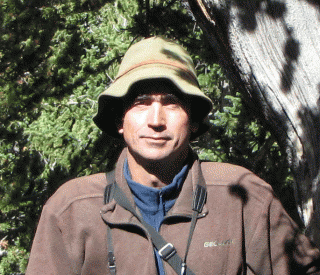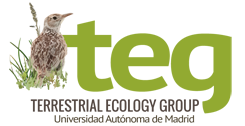
Universidad Autónoma de Madrid
Departamento de Ecología. C-101
C. Darwin, 2
Madrid 28049 España
Tfn: +34 91 497 8012
Fax: +34 91 497 8001
E-mail: je.malo(at)uam.es
I am deeply convinced of the usefulness of ecological research to solve or alleviate environmental problems, and my current research interests are focused on the effect of human activities on animal populations and ecological interactions.
In recent years I have concentrated on the study of vertebrate populations living close to large infrastructures, addressing issues of mortality, population fragmentation and changes in predator-prey interactions in them. In many cases, research has been oriented to the development and assessment of mitigation measures for environmental impacts. In parallel, I mantain a research line with vertebrate herbivores and changes associated to human activities, focusing on plant-herbivore-predator interactions and effects of domesticated ungulates on wild ones. All my research is done in collaboration with other scientists from the Terrestrial Ecology Group of UAM and other institutions.
Since 2006, I am Associate Professor at the Department of Ecology in the the Universidad Autónoma de Madrid where I regularly teach Environmental Impact Assessment in the Degree in Environmental Sciences, and Community Ecology in the Master in Ecology. I am also in charge of the Master Thesis coordination of the latter.
Some relevant & recent publications
Otero, B.F.; Herranz, J. & Malo, J.E. 2023. Bird flight behavior, collision risk and mitigation options at high-speed railway viaducts. Science of the Total Environment 902: 166253.
Malo, J.E. & Mata, C. 2021. Web databases of feather photographs are useful tools for avian morphometry studies. Ecology and Evolution 11: 7677-4684.
Dominguez, J.C.; Calero-Riestra, M.; Olea, P.P.; Malo, J.E.; Burridge, C.P.; Proft, K.; Illanas, S.; Viñuela, J. & García, J.T. 2021. Lack of detectable genetic isolation in the cyclic rodent Microtus arvalis despite large landscape fragmentation owing to transportation infrastructures. Scientific Reports 11:12534.
Pozo, R.A.; Cusack, J.J.; Acebes, P.; Malo, J.E.; Traba, J.; Iranzo, E.C.; Morris-Trainor, Z.; Minderman, J.; Bunnefeld, N.;, Radic-Schilling, S.; Moraga, C.; Arriagada, R. & Corti, P. 2021. Reconciling livestock production and wild herbivore conservation: challenges and opportunities. Trends in Ecology and Evolution 36: 750-761.
Mata, C.; Herranz, J. & Malo, J.E. 2020. Attraction and avoidance between predators and prey at wildlife crossings on roads. Diversity 12: 166
Planillo, A. & Malo, J.E. 2018. Infrastructure features outperform environmental variables explaining rabbit abundance around motorways. Ecology and Evolution 8: 942-952.
Planillo, A.; Mata, C.; Manica, A. & Malo, J.E. 2018. Carnivore abundance near motorways related to prey and roadkills. Journal of Wildlife Management 82: 319-327.
García de la Morena, E.L.; Malo, J.E; Hervás, I.; Mata, C.; Madrigal, S.G.; Morales, R. & Herranz, J. 2017. On-board video recording unravels bird behavior and mortality produced by high-speed trains. Frontiers in Ecology and Evolution 5: 117 (9 pp).
ResearchGate: www.researchgate.net/profile/Juan_Malo/

